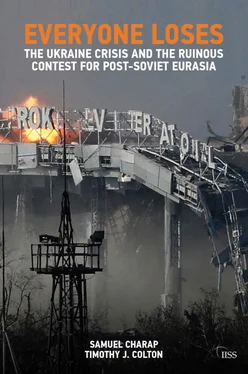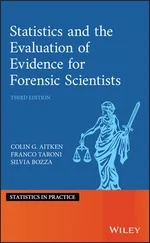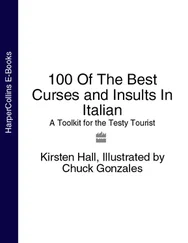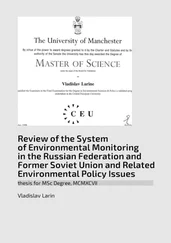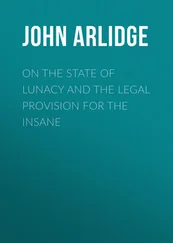Gorbachev was eventually won over to the American position that an amalgamated German state was more of a hazard to Soviet interests if non-aligned (and with the technical capabilities to go nuclear) than if knit into an alliance system. With the Warsaw Pact on the rocks, the sole alliance on offer was NATO. Gorbachev, Scowcroft writes, ‘appeared unable to come up with a better idea than what we were urging on him’. Had he been resolute about German neutrality, ‘he perhaps could have accomplished that’. [12] Bush and Scowcroft, A World Transformed , pp. 300–1.
The long-standing German problem was thus laid to rest. Two other daunting security questions were not: What would be the new regional order once the Warsaw Pact and COMECON had vanished? And how would its Soviet/Russian metropole relate to the Western camp?
On question number one, the USSR wagered on a body known as the Conference on Security and Co-operation in Europe (CSCE), to be renamed the Organization for Security and Co-operation in Europe (OSCE) in 1995. A child of the ephemeral East–West detente of the mid-1970s, it functioned as a roundtable for members of both alliances and Europe’s neutral countries. At a CSCE summit in Paris in November 1990, 32 nations initialled a Charter of Paris for a New Europe, saluting as their target the ‘Europe whole and free’ first hailed by Bush in 1989. [13] ‘Charter of Paris for a New Europe’, 1990, http://www.osce.org/mc/39516?download=true .
Soviet delegates talked up the CSCE as a replacement for both the Warsaw Pact and NATO. But it was an informal grouping with a tiny staff and budget; it had no collective security mission or integrated military command; and it operated only by consensus. Unlike in NATO, which also has a consensus rule, there was no tradition of deferring to US preferences, which devalued the CSCE in the eyes of the Americans. The CSCE, as Baker summed it up, was ‘an extremely unwieldy and frustrating organization’ whose bylaws ‘give the smaller states of Europe veto power over issues far beyond their standing’. [14] Baker, The Politics of Diplomacy , pp. 173, 196.
In another tack, Gorbachev, in several pronouncements after he disowned the Brezhnev Doctrine, advocated the ‘Finlandisation’ of East Central Europe. Post-1945 Finland was neutral in foreign affairs, traded extensively with the Soviet Union and was self-governing in its domestic affairs. Gorbachev lauded Finlandisation during a visit to Helsinki in October 1989: ‘To me, Finland is a model of relations between a big country and a small country, a model of relations between states with different social systems, a model of relations between neighbours.’ [15] Bill Keller, ‘Gorbachev, in Finland, Disavows Any Right of Regional Intervention’, New York Times , 26 October 1989, http://www.nytimes.com/1989/10/26/world/gorbachev-in-finland-disavows-any-right-of-regional-intervention.html .
The former US secretary of state, Henry Kissinger, weighed in on Gorbachev’s side. ‘In the long run’, he asked in an op-ed, ‘aren’t arrangements in Finland more useful to Soviet security than those in Eastern Europe? Is it possible to devise arrangements that would give the Soviets security guarantees (widely defined) while permitting the peoples of Eastern Europe to choose their own political future?’ [16] Gorbachev and Kissinger quoted in Bennett Kovrig, Of Walls and Bridges: The United States & Eastern Europe (New York: New York University Press, 1991), p. 360.
Neither recipe could have been implemented unrevised. For the CSCE to be the linchpin, it would have had to be boosted administratively and financially. At some point, it would have had to displace NATO and the EC as the primary regional organisation for collective security and economic integration. As long as the much heartier NATO and EC continued to function at their previous level and did not face challenges to their raison d’être , the West would have little incentive to empower an alternative body, particularly one where the heir to its long-time adversary had an equal say. Many regarded Finlandisation as tarnished by its power asymmetries, and Finnish–Soviet relations since 1945 had fluctuated over time; Finlandisation was not one prototype but several. [17] Stephen Kux, ‘Neutrality and New Thinking’, in Roger E. Kanet, Deborah Nutter Miner and Tamara J. Resler (eds), Soviet Foreign Policy in Transition (Cambridge: Cambridge University Press, 1992), pp. 110–13. The papers in this collection were written for an academic conference in 1990. By the time they came out, there was of course no such thing as Soviet foreign policy.
A more relevant precedent may have been ‘Austrianisation’, harkening back to the imposition of neutrality on post-war Austria by great-power dictate in 1955. It was missing from the conversation, other than a succinct reference by Kissinger in June 1990. [18] The treaty restoring Austria, under occupation since 1945, as a sovereign state was signed by the Allied powers and the Austrian government in May 1955. The Soviets made it a condition of signing that neutrality be written into the constitution, which was done by act of parliament five months later. Kissinger specifically suggested an Austrian-type arrangement for Czechoslovakia, Hungary and Poland. See Gerald B.H. Solomon, The NATO Enlargement Debate, 1990–1997: Blessings of Liberty (Washington DC: Center for Strategic and International Studies, 1998), p. 8. For broader discussion, see Richard Ned Lebow, ‘Understanding Change in International Politics: The Soviet Empire’s Demise and the International System’, in Richard Ned Lebow and Thomas Risse-Kappen (eds), International Relations Theory and the End of the Cold War (New York: Columbia University Press, 1995), pp. 155–6.
The 22 NATO and Warsaw Pact states in November 1990 signed a Treaty on Conventional Armed Forces in Europe (CFE), delineating ceilings for armaments for what were still the two blocs, and created an inspection and verification regime to build confidence and reinforce stability. A follow-up at Helsinki in 1992 set limits on military personnel. Other than the CFE, which was about hardware and manpower and not about how or against whom they were to be used, no all-encompassing security framework for Europe was given serious consideration in the twilight of the Cold War. The Warsaw Pact, the ‘socialist community’ that it shielded having melted away, voted to disband in February 1991; COMECON followed suit that June. The Western duo of NATO and the EC was now the only game in town.
The talks over Germany not only yielded agreement on it remaining within NATO after reunification but also touched upon the future of the Alliance, and by implication of the security architecture of the extended region. This far-ranging issue was to be a future bone of contention. At a sitting with Gorbachev in February 1990, Baker enunciated the United States’ willingness to pledge ‘no extension of NATO’s jurisdiction for forces of NATO [sic] one inch to the east’ upon reunification. Baker was addressing the question of whether NATO forces would be barred from the territory of the GDR, as the Soviets were demanding. But this and other diplomatic exchanges left the Soviet negotiators with the distinct impression that the prohibition would transcend East Germany and cover the other five nations stranded in the Warsaw Pact (Bulgaria, Czechoslovakia, Hungary, Poland and Romania). The latter position, as Joshua Shifrinson has documented, was mooted in some inter-agency memos in Washington and had been spelled out by the West German foreign minister, Hans-Dietrich Genscher. Enlarging NATO beyond Germany was not on the table for anyone at the time; the Soviets, it has to be stressed, now believed that it would never be. The US and West Germany delivered informal assurances on limiting NATO’s geographical reach, on respect for Soviet core interests and on cooperatively figuring out a comprehensive security framework, perchance through a revamped CSCE. As Baker put it in a memo after one confab with Shevardnadze, the process ‘would not yield winners and losers. Instead, [it] would produce a new legitimate European structure – one that would be inclusive, not exclusive.’ [19] Joshua R. Itzkowitz Shifrinson, ‘Deal or No Deal? The End of the Cold War and the U.S. Offer to Limit NATO Expansion’, International Security , vol. 40, no. 4, Spring 2016, pp. 7–44; Baker quotation at p. 30. A well-argued alternative interpretation is Mark Kramer, ‘The Myth of a No-NATO-Enlargement Pledge to Russia’, Washington Quarterly , vol. 32, no. 2, April 2009, pp. 39–61.
Читать дальше
